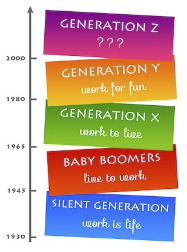Is your recruitment and retention strategy working, or are you just plugging the leaks?
Recently, we experienced a torrential downpour, and, as sometimes happens with older houses, my basement office was flooded as the water leaked in. While moving furniture and pulling up nasty carpets, I decided to use the opportunity to purge decades’ worth of collected magazines and conference proceedings. In the process, I was given a damp reminder that what was old almost always becomes new again.
Flipping through wet magazines, I remembered that some 25 or so years ago, conferences focused almost primarily on recruitment and retention.
Last month, I attended the SHRM 2024 Talent Conference in Vegas, and the predominant focus was on, you guessed it, selection and retention. Special sessions were devoted to behavioural and motivational interviewing and aligning recruiting and staffing with the strategic corporate agenda. Interestingly, the same topics are at the top of mind again today. What goes around comes around.
As I contemplated my water problem and wondered why I hadn’t done anything to prevent the possibility of a flood, I wondered why, decades later, organizations are still grappling with recruitment and retention. The great resignation or the great realignment of talent in the post-COVID-19 world reignited the issue of the critical need for retention. The reality that today there are more job vacancies than people to fill the roles also stresses the need to find and retain talent beyond a year or two.
Did Prior Solutions Not Work?
 If the conferences and books from the past made the correct recommendations, organizations would enjoy the fruits of a sustained and engaged workforce. Or was all that shared learning of the late ’80s and early ’90s only theoretical and thus misleading and ineffective when applied to the real world?
If the conferences and books from the past made the correct recommendations, organizations would enjoy the fruits of a sustained and engaged workforce. Or was all that shared learning of the late ’80s and early ’90s only theoretical and thus misleading and ineffective when applied to the real world?
Taking stock and reflecting on what I’ve seen in the intervening years, I don’t blame the books and the shared learning. I blame the focus on problem-solving, which is rampant in corporate cultures. Organizations are always trying to solve the crisis of the moment, and the areas of human capital and talent management are no exception. We hire people who look exceptional because of some urgent skill need, usually a skill that happens to be in fashion that year, even when those golden-haloed angels don’t fit the organization very well.
Or in the third quarter, a company downsizes to put money on the bottom line and eliminates people who fit the organization, only to have to replace them once business accelerates.
Or we outsource to low-cost providers without considering the more significant impact on customer service or the morale of the remaining employees.
Or we react to some demographic change, like the emergence of Generation X, while forgetting the needs of the baby boomers who were, and still are, valuable contributors to success.
All of this means we’re not thinking of the future; we’re just plugging the leaks of the moment. We’re exhibiting a pattern of crisis manipulation to solve problems instead of looking for lasting and sustainable results according to a plan. Making matters worse, in the lulls between crises, we see managers become apathetic about the long term, knowing from experience that something “urgent” will soon show up again. That familiar oscillation between the newest and greatest talent-management intervention and a complete disinterest in people as a strategic resource leads to much cynicism.
Can We Avoid Repeating the Problem
 Suppose we don’t want to be in the same situation 15 years from now. In that case, we need to stop treating the current recruitment and retention problem as a crisis that can be fixed and begin looking for solutions that will have a sustainable and positive impact.
Suppose we don’t want to be in the same situation 15 years from now. In that case, we need to stop treating the current recruitment and retention problem as a crisis that can be fixed and begin looking for solutions that will have a sustainable and positive impact.
Suppose we don’t want to be in the same situation 15 years from now. In that case, we must stop treating the current recruitment and retention problem with myopic vision. The more meaningful solutions will enable finding and retaining top talent and positively impact the business.
The essential long-term priority is to recruit people who fit your organization and the job. Good fit has four components: skill, knowledge, behaviours, and values. An ideal employee needs the appropriate skill set, knowledge, and ability to execute the work. In addition, achieving results is more important than achieving results alone. Companies must identify the value and job behaviours that best predict future success and belonging. Knowing the behaviours that define fit, hiring managers must have the courage and discipline to employ a candidate who aligns with the organization’s values.
Of course, this is familiar. It’s a kind of inefficient recycling. We’ve been saying since the late ’80s that we need to hire people who fit the organization, and fit and behaviours take precedence over results, years of experience, and resumé. But now that such concerns are coming back into vogue, organizations are grasping, in their urgency, for the wrong solutions.
Structured behavioural interviews and well-trained managers who perform them remain the best and most cost-effective means of evaluating fit and hiring employees who will be retained.
Some Considerations
If you want to avoid plugging leaks and establish a long-term approach, here are some temporary crises to prevent.
 Boomers — We’ve been waiting for boomers to leave organizations in droves. But what if they don’t? Should you consider a valued employee who fits the organization and has a potential ten years of work life left a non-essential contributor because some trendy book or academic says a tremendous demographic shift is coming? Some succession management experts say boomers have only one promotion left, but many are highly promotable and have great potential with a possible ten years of work remaining. Furthermore, consider the wealth of knowledge they can share with people before they exit.
Boomers — We’ve been waiting for boomers to leave organizations in droves. But what if they don’t? Should you consider a valued employee who fits the organization and has a potential ten years of work life left a non-essential contributor because some trendy book or academic says a tremendous demographic shift is coming? Some succession management experts say boomers have only one promotion left, but many are highly promotable and have great potential with a possible ten years of work remaining. Furthermore, consider the wealth of knowledge they can share with people before they exit.
- Generation Y—The common perception is that members of Gen Y are not loyal. They are as loyal as any employee group; they exhibit more courage than most to leave a bad company or boss. If you hire according to fit, you can expect to retain your Gen Y as long as any employee.
- Generation X might have a different perspective on life. While the gig economy has made itself available to Gen X as an option, it is interesting to note that an unexpected and strange externality has started to surface as people come to terms with the reality of working on “their own terms.” They are realizing that not everyone is cut out for independent work, and their perspective on work and financial and personal needs might not be aligned with working independently. Many Gen Xers are talking about finding a job where they can stay for a long time and flourish and then retire; they are seeking to commit to and stay with something they are passionate about. The hiring process has to share with prospective employees the authentic purpose and passion of the company. After all, having children, a mortgage and other responsibilities might cause one to rethink priorities. While only a thought, many people approach recruitment as a short-term proposition as a cost of doing business. What if one takes the time to explore new employees’ passion, purpose, and values – and resist filling the seat with a warm butt to get through a short-term immediate crisis? Taking a longer-term perspective might change the retention paradigm. Perhaps retention is an issue we create to justify our shortcomings as employers where people choose to work. Instead, we should be looking for employees who choose to work because they fit our values, purpose and passion for something more significant than making the rent, mortgage, or college loan payment.
- Eliminate false measures of successful recruitment Yes, this might mean eliminating the measure of time to hire. It should, anyway. Perhaps the understanding of a quality hire needs to be redefined to fit not just the results or the annual performance review but also the person’s alignment with the company’s purpose, values and commitment to the company. They will be lagging indicators, as are all the other ROI measures associated with talent management. Acquiescing to measure something that can’t be measured only to look robust about numbers puts us in a hole in every single way. We must speak up, offer the facts about quality measures, and avoid meaningless, misleading measures. We’ll only be able to judge the results of successful recruitment and hiring through higher levels of retention and commitment, loyalty, engagement, quality and productivity; all can only be measured sometime after the employee begins on the job.
Hold Managers Accountable
 Ultimately, managers are the leading reason for high retention. Managers should have an annual KPI for retention. Once a person is on the job, salary and benefits are rarely the reason for attrition. The employee is less likely to stay if a manager does not hire for fit. If the manager was hired or promoted because of their results and without regard to fit the values, they will not themselves hire for fit to values and purpose. You can perpetuate the recruitment problem by selecting or rewarding the wrong behaviours by promoting people not aligned with your company’s values and purpose. It is time to look at the reality of alignment of people and values with the organization’s values and purpose and fix the problem, or you’ll feel like you’re reliving the past when the rains come and wash your office out – again.
Ultimately, managers are the leading reason for high retention. Managers should have an annual KPI for retention. Once a person is on the job, salary and benefits are rarely the reason for attrition. The employee is less likely to stay if a manager does not hire for fit. If the manager was hired or promoted because of their results and without regard to fit the values, they will not themselves hire for fit to values and purpose. You can perpetuate the recruitment problem by selecting or rewarding the wrong behaviours by promoting people not aligned with your company’s values and purpose. It is time to look at the reality of alignment of people and values with the organization’s values and purpose and fix the problem, or you’ll feel like you’re reliving the past when the rains come and wash your office out – again.
David S. Cohen is the founder and principal of DS Cohen & Associates. The author of:
- The Talent Edge: A Behavioral Approach to Hiring, Developing, and Keeping Top Performers (John Wiley and Sons, August 2001)
- Inside the Box: Leading With Corporate Values to Drive Sustained Business Success (Jossey-Bass August 2006)
David’s new book Selecting the Best is a case study and guidebook to hiring for fit to values using structured behavioural interviewing. It is now available for preorder.
His email is David@sagltd.com.
 DS Cohen & Associates
DS Cohen & Associates
